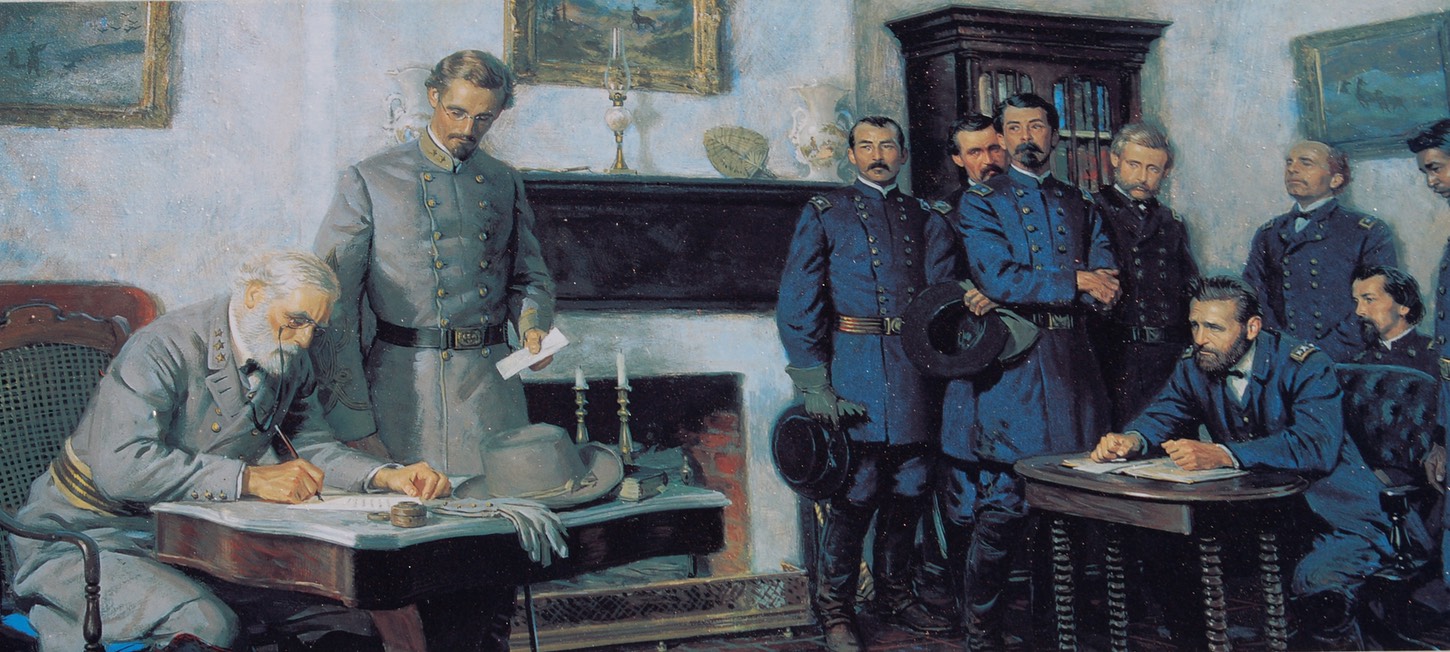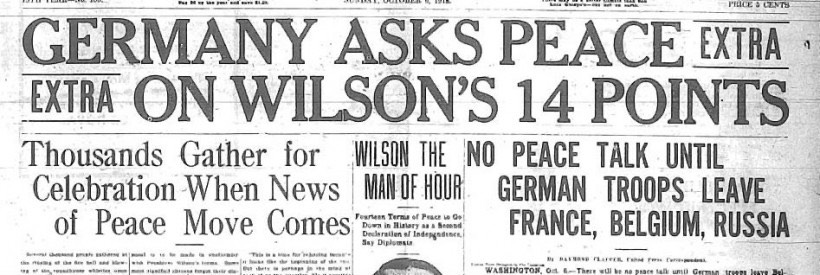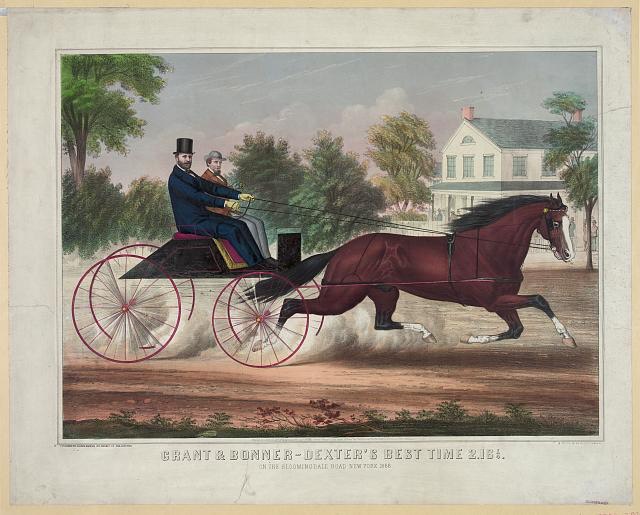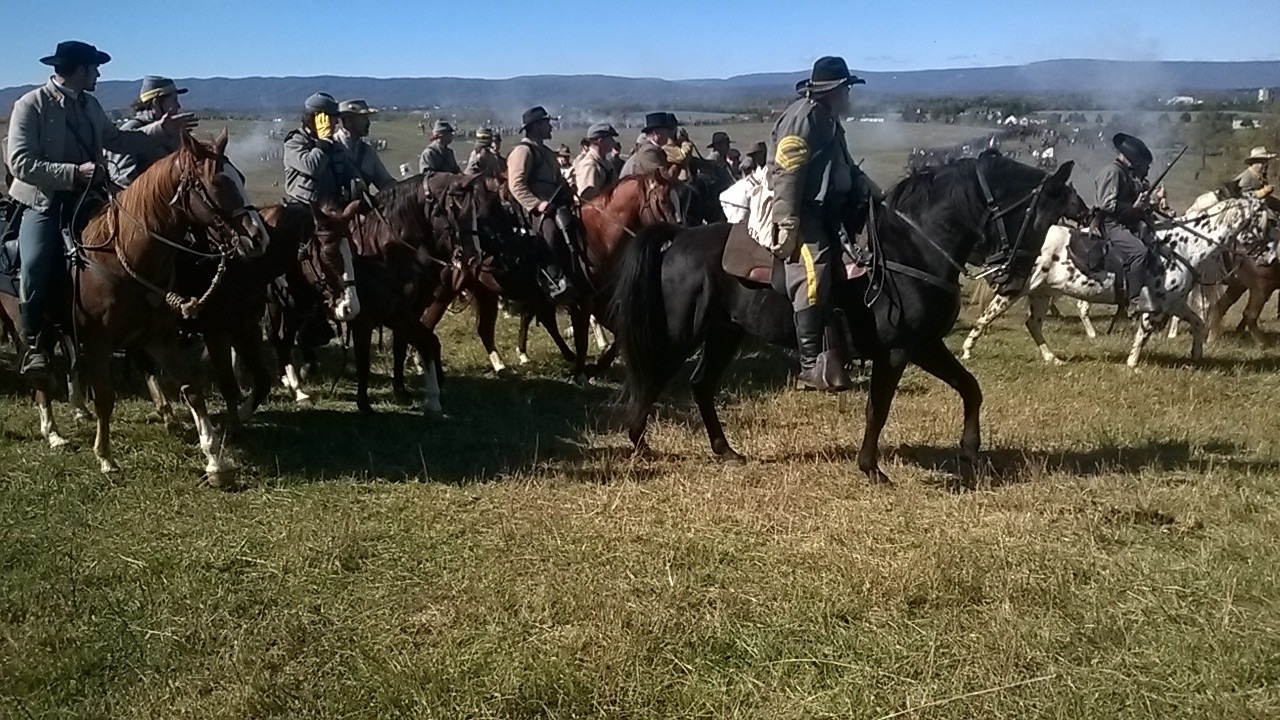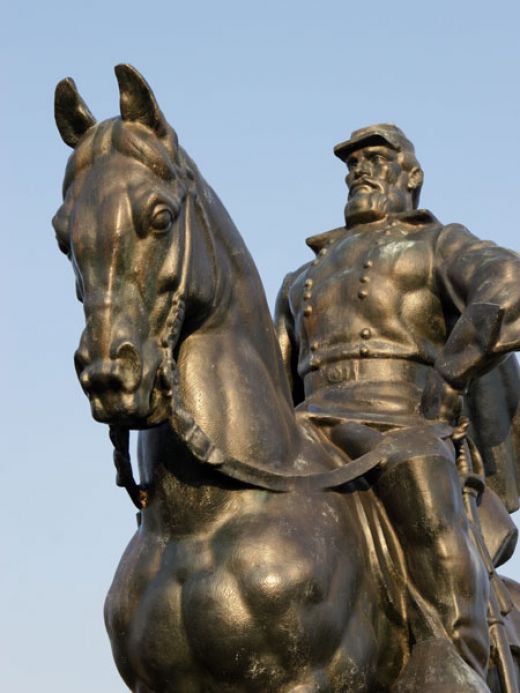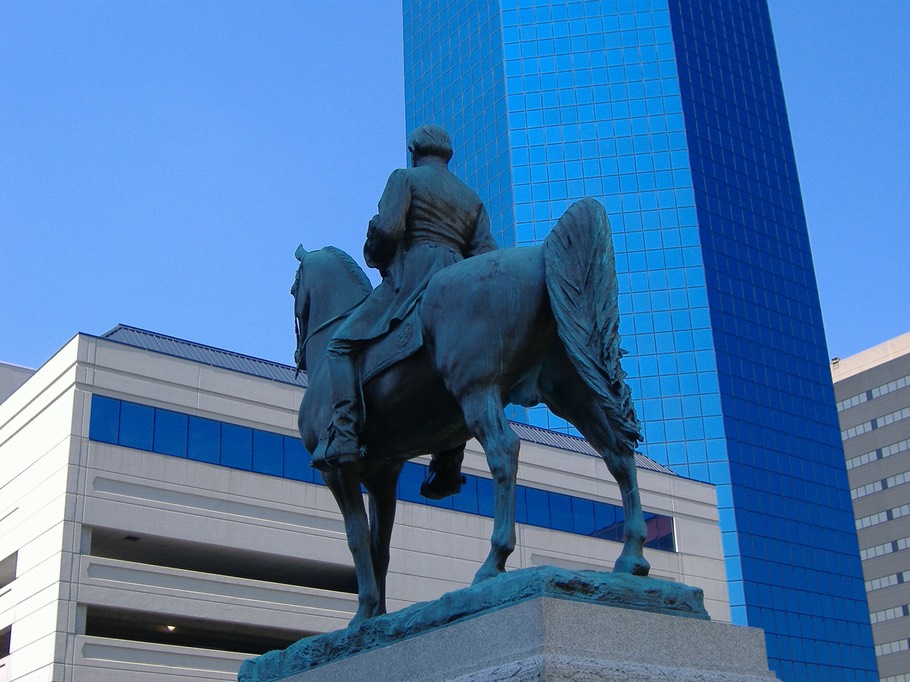By Ulf Lindström
On April 9, 150 years ago, Union General Ulysses S. Grant and Confederate General Robert E. Lee met at Appomattox Court House to sign the surrender of the South. Four years of carnage had cost the United States 650,000 casualties, more than what the country has lost in all wars since combined.
It had taken two years for the officers of the Union (North) army to learn how to ride a horse, not just driving from behind. The officers of the Confederacy (South) grew up on horseback. Horsemanship too accounts for the initial victories of the "rebels" in the American Civil War.
Before the Union victories at Gettysburg and Vicksburg the first days of July, 1863, the Northern homefront was torn by doubt. Defeats at Manassas and especially the slaughtering of troops at Shilo the previous year were met with public disbelief. Voices were raised in New York, Philadelphia and Washington for afterthought and peace initiatives, even political compromises on slavery.
What if, considering, slavery was allowed in the new states of the West, in addition to the 11 Southern states that in 1861 had seceded to form the Confederate States of America? It was widely held that the sheer vastness of the West, its soil and climate, simply didn't make slave-labor sustainable. As for the South, the "peculiar institution" of slavery was a matter of states' rights protected by the Constitution, projected to be withering away with the advance of industrialization and urbanization.
Historians don't like it, but counter-factual thinking suggests that the U.S. would never had entered World War I if the country had been split into two, let alone the West too, following a peaceful settlement between the Union and Confederacy in 1861 or 1862. American non-intervention in WW I and President Wilson's absence at the subsequent Paris peace process, in turn, may have spelled an outcome of WW I less traumatic for the Central Powers, Germany and Austria-Hungary in particular.
Union Pesident Abraham Lincoln never wavered; the Union was indivisible. Instead he relieved one general after the other until he appointed Grant commander of the entire army. Grant was the nonpareil of the Union, as horseman too. His seat and hands won acclaim – other generals were known to be lifted into the saddle. (Grant's stint as breeder of Standardbreds in his post-presidential years – with a stock of 30 broodmares – was a miserable failure, though. Nonetheless, it was cheap of Robert Bonner not to present Grant with his world-record holder Dexter – a harmless gelding – for services well rendered. Not even 'A horse for a republic,' to remind of Richard III's epic distress call.)
Mounted officers also in the infantry meant two tactical and one psychological advantages: increased mobility and communication among units, better overview across battle grounds and as visible to the soldiers the commanders instilled courage among the ranks ahead of orders to charge.
To have a horse shot under oneself was a sign of the officer's guts and a source of trust and respect among the soldiers. General Nathan Bedford Forrest of the Confederate Cavalry is believed to have a record two dozen horses shot under him. One and a half million horses were killed during the war, at Gettysburg alone between three and four thousand. Of the horses that survived some became legends, inseparable from their generals. Indeed, when later cast in bronze as statues, some horses were embellished to the point of embarrasment.
General Jackson had "Stonewall" added to his name when he, motionless atop his Little Sorrel (bloodline Justin Morgan, b. 1789, as statue a tribute to steroids), commanded his brigade at the first battle of Manassas. If his stand like a stonewall was meant as an accolade or criticism has never been settled. The source of the comment (gen Bee) fell in action.
General Lee's Traveller – the most famous mount of the war – reared in a fortuitous moment to let a bullet pass under his chest and between his hind legs.
Lee described his grey gelding in a letter: "muscular figure, deep chest, short back, strong haunches, flat legs, small head, broad forehead, delicate ears, quick eye, small feet, and black mane and tail." Traveller was of mixed blood, half Saddle Horse and thoroughbred, age about 5 when Lee bought him in 1862 for $200.
In the Confederate army the most common horse was the Running Horse, both galloping and pacing. Hybrids, of English Thoroughbred and Saddle Horse, were also seen. More importantly, the officers answering the call for service brought their own mounts, familiar with the traits and antics of their companions. That gave their riding skills precious return at maneuvers and in the heat of battles.
In the Union army the trotter was the dominant blood, in particular the American Trotter (later to be bred as Standardbreds) and Morgans. The Morgans were the choice before others for their suitable size and especially their temperament in the thick of the battles. However, the horsemanship of the Union riders was less than satisfactory, also in the care of the poor beasts they had been issued. Saddle sores, wrong bits and neglected hooves ultimately took its toll among the ranks of men too.
In the North, where yeomen farmers worked in the fields and forests, the transition to harness horses accompanied the spread of more and better roads between growing towns. At least a couple of trotters were found at most farmsteads. In the (deep) South, with chattel labor at the plantations, crops of rice, cane and cotton were shipped along waterways and the fieldhands managed by mounted overseers. Roads were few since the important towns were located by the water and the public served by ships. Among plantation owners and their sons a fine saddle horse and refined riding skills were marks of status as well.
In the end Southern gallantry, whether on horseback or as a way of life, could not save the Confederacy. Grant realized – and Sherman put it to effect in his march through Georgia to the sea – that the war could only be won by merciless destruction of Southern moral, infrastructure and economic resources. That was exactly what Lee faced when, in April near Appomattox, he was waiting for the train with rations for 25,000 starving soldiers. The train arrived, empty. Lee gave order for a clean uniform, blackened boots and grey kid gloves.
At the outbreak of war no studbooks were yet compiled (Wallace's Register appeared in 1879). Worse, the names of horses were freely recirculated, changed and simply forgotten. Arguably, the prominent trotter of the war was general Joseph Hooker's Lookout. His damsire was Mambrino, one of many Mambrinos by Messenger. General Sheridan's Rienzi, renamed Winchester, was by Black Hawk, probably Morgan Black Hawk.
Still, a few individuals may be identified for pedigree, such as those descending from Glencoe (b. 1831, among the first imports to the U.S. of English Thoroughbred stallions, American sire of the year seven times between 1847 and 1857).
A direct progeny of Glencoe, a "high-crested bay gelding," was a mount of general John Hunt Morgan. He, like his own and stolen head, are complex characters in the annals of the war. Morgan, 35 years old at the beginning of the war, was a resident of Lexington, Kentucky. The state never chose side in the war. Hence, Morgan organized his own militia in the service of the Confederacy. The militia raided enemy positions also across the Ohio border, plundered and - disgraceful to himself and Kentucky's equine legacy - stole blueblooded stock in the home state for ransom money. He was shot in the back trying to escape from capture in 1864. Early in the 1900s, as part of the myth of "the lost cause," the Daughters of the Confederacy raised funds for a statue of Morgan on horseback. The statue is to be seen in Lexington today as a monument to history fraud: General Morgan is mounted on his favourite horse, Black Bess. It is a mare with balls, literally. She is fitted with testicles.
References: C.G. Worman, Civil War Animal Heroes (2011). Maryjean Wall, How Kentucky Became Southern (2012). D. M. Dowdall, From Cincinnati to the Colorado Ranger - The Horsemanship of Ulysses S. Grant (2012).
Thanks to Ms. Kathleen Kirsan.
2015_04
